
7 minute read
Opulence of Opera: Fashion
A MIDSUMMER NIGHT’S DREAM
A conversation with Pat Seyller, costume shop manager with Virginia Opera
Advertisement
by jill doczi
Virginia Opera had to make many alterations to their delivery over the last year and a half when pandemic restrictions forced them to shutter their indoor productions at the Harrison Opera House. The performers moved outdoors, online and to alternative stages, exposing many more people to their craft, but limiting the ability to shine through lighting, acoustics, set design and costumes.
Photos ©Ben Schill Photography
MADAMA BUTTERFLY
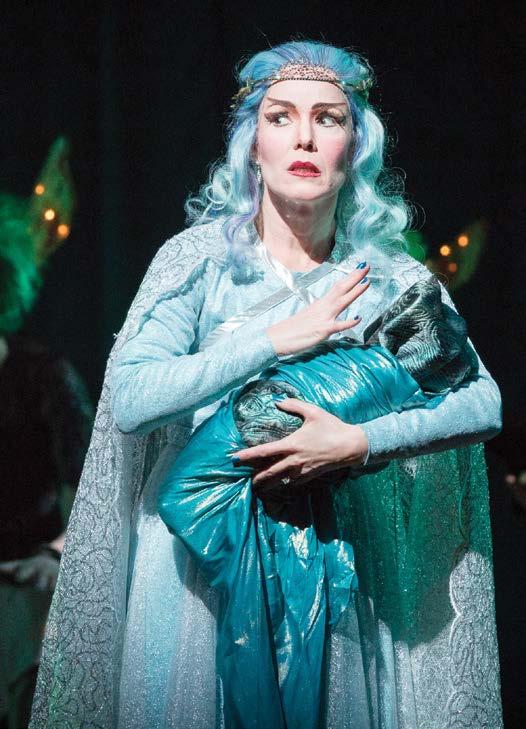
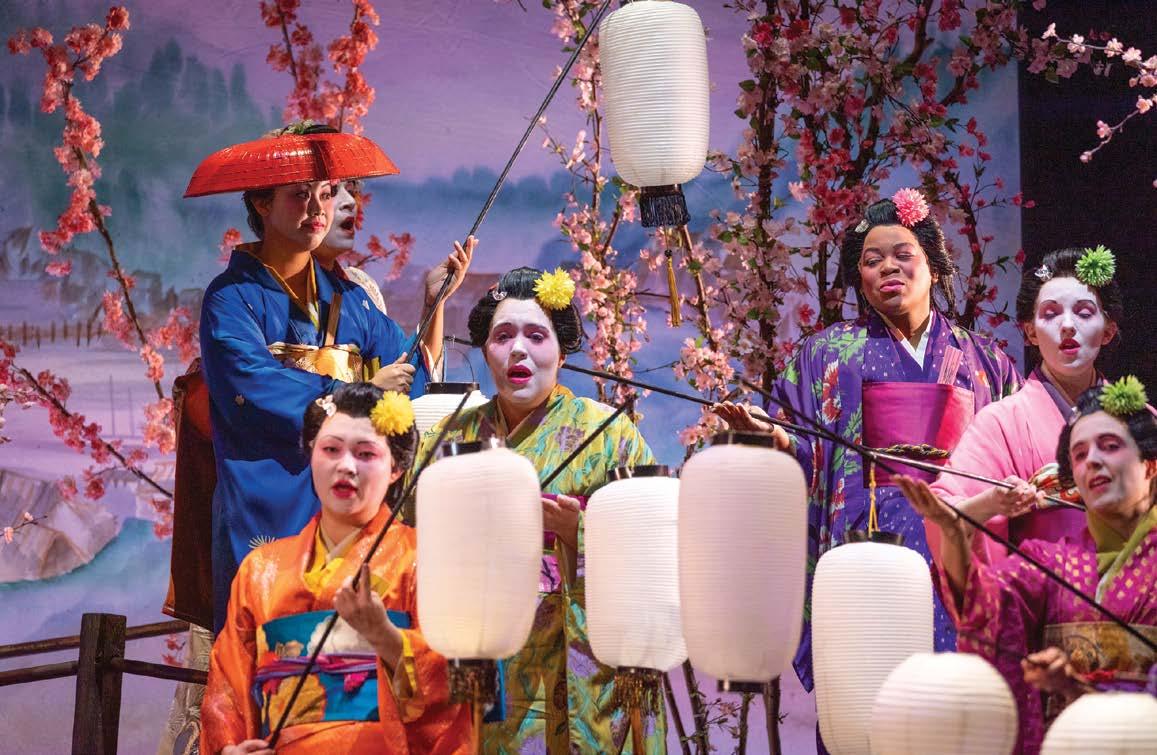

Some solutions included the Wednesday Wind-Down lawn concert series in front of the opera house, the “Let’s Talk Opera” series live on YouTube and Facebook, a live performance of ‘Das Rheingold’ at Topgolf, outdoor stage performances, free concerts, happy hour chats with performers on YouTube and Facebook, an online “Masterclass” series, virtual content (including study guides and other informational materials, specifically for teachers and students), streamed performances and the “Stayin’ Alive” pop-up concerts at alternative locations such as vineyards, churches, Virginia Zoo, Norfolk Botanical Garden, parks and Jamestown Settlement. At long last, live indoor productions return to the Harrison Opera House featuring Virginia Opera and Virginia Symphony Orchestra in November with the performance of “La Bohème.” Sets and costumes will take to the stage once again. We had a conversation with Pat Seyller, head of companies usually has had input previously. They may want a traditional ‘Das Rheingold,’ because they may want to balance out the season with a traditional piece, a modern piece, one set in 1940s and a fantasy. For us the venue (Topgolf) helped to figure out the concept.” The designs may need rethinking if the director doesn’t want what the designer has created or the head of the company doesn’t like it. Sometimes they love it, but have an additional idea to incorporate. Designers often see things on the singer after completion and decide to make changes at that stage.
costume shop manager with Virginia Opera, about costumery. Typically designers are hired for a show as it comes to fruition to create ideas and designs. The original costumes can live on as rentals for future shows. The designers, directors and set designers decide the feel for the production, ie. traditional, new and modern or maybe set in 1950s golf attire like the recent Virginia Opera “Das Rheingold” production. Once they determine a concept, the costume designer begins work on looks and ideas, presents them to the director for approval and then draws them and gives them to the costume department to figure out how to create them. If it’s a rental package, the director usually looks at the options and chooses a package based on look, price, availability, etc.
Who has input in that?
“The design team—the director, the costume designer and the set designer,” said Seyller. “However, the
How historically accurate do they need to be?
“You need to have it close, but maybe not perfect,” said Seyller. “Some designers are more of a stickler for that than others. But we do try. Sometimes we want the idea of it, but not that exact thing. There are a lot of religious things that happen in opera
A MIDSUMMER NIGHT’S DREAM

and it used to set my volunteers off if they didn’t think it was absolutely correct, I had to constantly remind them we weren’t in church. Some artistic license certainly is used.”
The opera sometimes rents from costume houses or other opera companies. They may also purchase them or create them in-house, using the staff or an independent draper or shop. Most often the production uses all of these options at the same time.
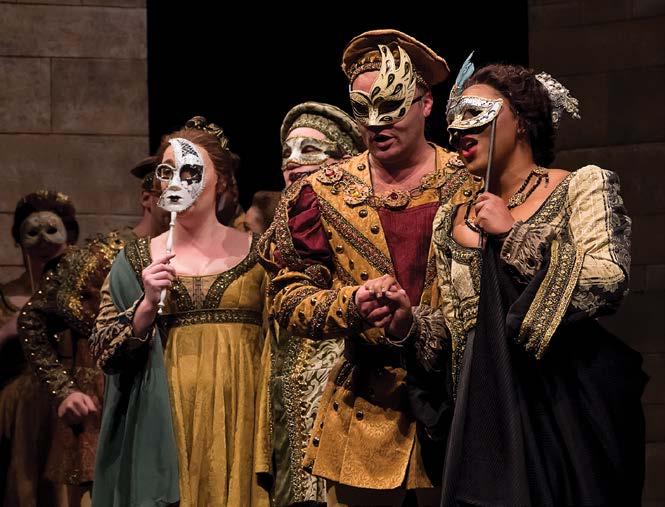
Who maintains them?
“Our shop once they arrive in the building,” said Seyller. “We fit, alter, paint and or dye, distress them (make them look old/bloody/ripped), add trim, remove trim, replace certain pieces, etc. We do all of the laundry after every show and dry clean when needed. After every [production] ends we dry clean everything that we can and wash what’s needed.” This opera company ships costumes quite often using companies like FedEx and UPS. But once they arrive in Virginia, they move them from Norfolk to Richmond to Fairfax for Virginia Opera performances in rolling road boxes— very similar to how big concerts roll in and roll out of venues. They have road boxes for hanging clothes, for shoes and hats, as well as all of the necessary equipment like steamers, irons and sewing machines. If they have an odd piece they have to figure out how it will travel best—sometimes rigging a holding mechanism in the road box or building extra road boxes specifically for those pieces.
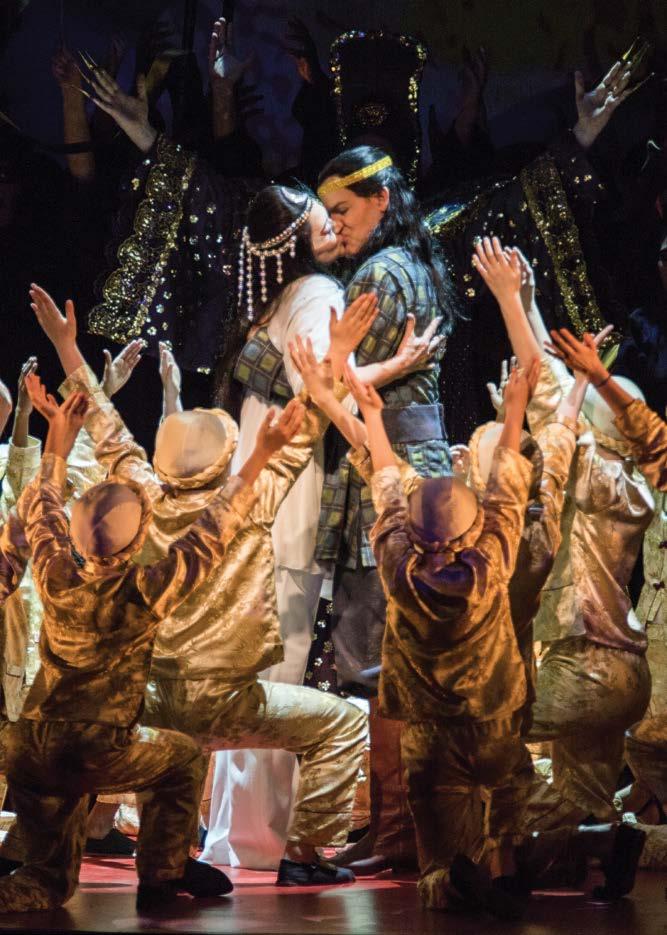
How are they stored?
“We have two large rooms on the 4th and 5th floors of the building,” said Seyller. “When they renovated the building in 1993, those rooms were left vacant. They are just cinderblock rooms, which we (the costume staff) went up and painted the walls and floors so that they weren’t so dirty and lights and poles were hung for all of the clothes. They thought eventually
TURANDOT
ROMEO & JULIET
elevators would be added, but alas no. It’s a hike with heavy costumes. We have just now started to run out of room.” Usually only one of each costume gets created because of the expense and time necessary to make them. Sometimes there are doubles of each. If the production rents from another company, often the clothes don’t fit the singer so they might have to copy the original for this production and usually they stay with the production so the next time someone rents it, two options will exist. Costumes don’t usually get replaced unless the opera does the show again and needs new sizes or something has worn out. Virginia Opera still uses costumes from “Mary Queen of Scotts” and the original “Christmas Carol” performed in 1977 and 1979, respectively..
What happens when a costume needs immediate repair during a performance?
“We either quickly take it off the singer and sew on the machine or pin until they can get off the stage,” said Seyller. “Sometimes we may have to run down and find a new pair of shoes— but we have even gaff-taped the sole on in an emergency.” Operas like “Manon,” “La Traviata,” “The Rosenkavalier” and “The Ghost of Versaille, usually 18th century pieces, typically have the most extravagant costumes, if performed traditionally.

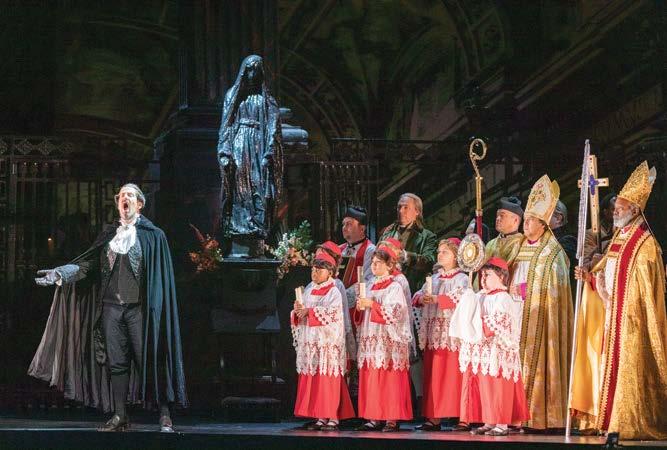
What operas have the simplest costumes?
“None of them are simple,” said Seyller. “Modern seem to be more
CINDERELLA simple because there is a lot of shopping until it fits, but that can be a nightmare too—to find it and in the right size—the returns are a nightmare.”
The opera keeps old costumes they think they will reuse and rents out others if different companies want them. Often designers will see things in storage and decide they could use them or repurpose them in a future production.
Do you have a favorite costume?
“I have lots, but the show that I found to be the most fun was a show we did a long time ago,” said Seyller. “In fact, it was the year we were out of the Harrison Opera House due to renovations. We were in a shop on Bank Street and performed ‘The Not Mikado’ at the now-closed Pavillion. It was designed by Eduardo Sicangco and crazy fun.” Traditional supporters of the opera, and now newly exposed fans of the genre, can finally enjoy the details that go into costumery with Virginia Opera performances once again on stage at the Harrison Opera House this season. See the Virginia Opera website for more information on upcoming performances.
TOSCA
La Boheme
Friday, November 5, 8 p.m. Saturday, November 6, 7:30 p.m. Sunday, November 7, 2:30 p.m.
Three Decembers
Friday, January 28, 8 p.m. Saturday, January 29, 7:30 p.m. Sunday, January 30, 2:30 p.m.
The Marriage of Figaro
Friday, March 25, 8 p.m. Saturday, March 26, 7:30 p.m. Sunday, March 27, 2:30 p.m.
The Sound of Music
Friday, May 13, 8 p.m. Saturday, May 14, 8 p.m. Sunday, May 15, 2 p.m.
ticketing.vaopera.org
DECEMBER 10-31

DRIVE-THRU LIGHT SHOW
DEC. 10, 11, 17 & 18: Meals available for purchase and campfire seating
3531 Bunch Walnuts Road, Chesapeake, VA 23322 • 757-421-4177 • triplerranch.org












